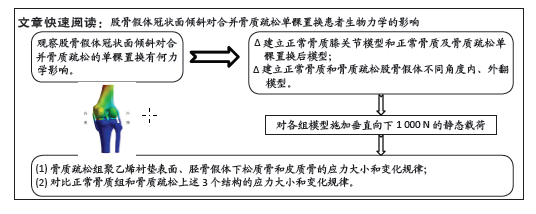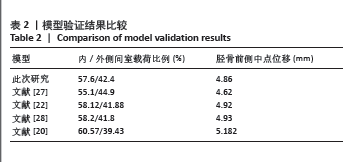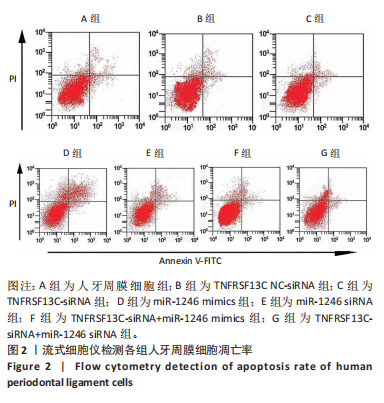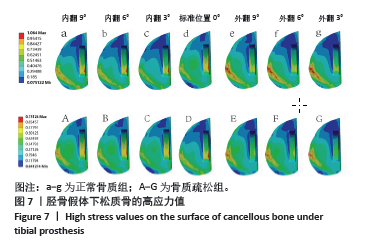[1] SENG CS, HO DC, CHONG HC, et al. Outcomes and survivorship of unicondylar knee arthroplasty in patients with severe deformity. Knee Surg Sports Traumatol Arthrosc. 2017;25(3):639-644.
[2] BONANO JC, BARRETT AA, AMANATULLAH DF. Medial Unicompartmental Knee Arthroplasty with a Mobile-Bearing Implant. JBJS Essent Surg Tech. 2021;11(2):e20.00002.
[3] RODRÍGUEZ-MERCHÁN EC, GÓMEZ-CARDERO P. Unicompartmental knee arthroplasty: Current indications, technical issues and results. EFORT Open Rev. 2018;3(6):363-373.
[4] LIDDLE AD, JUDGE A, PANDIT H, et al. Adverse outcomes after total and unicompartmental knee replacement in 101,330 matched patients: a study of data from the National Joint Registry for England and Wales. Lancet. 2014;384(9952):1437-1445.
[5] SANO M, OSHIMA Y, MURASE K, et al. Finite-Element Analysis of Stress on the Proximal Tibia After Unicompartmental Knee Arthroplasty. J Nippon Med Sch. 2020;87(5):260-267.
[6] THOREAU L, MORCILLO MARFIL D, THIENPONT E. Periprosthetic fractures after medial unicompartmental knee arthroplasty: a narrative review. Arch Orthop Trauma Surg. 2022;142(8): 2039-2048.
[7] YOKOYAMA M, NAKAMURA Y, EGUSA M, et al. Factors related to stress fracture after unicompartmental knee arthroplasty. Asia Pac J Sports Med Arthrosc Rehabil Technol. 2018;15:1-5.
[8] LEE YS, YUN JY, LEE BK. Tibial component coverage based on bone mineral density of the cut tibial surface during unicompartmental knee arthroplasty: clinical relevance of the prevention of tibial component subsidence. Arch Orthop Trauma Surg. 2014;134(1): 85-89.
[9] KOECK FX, BECKMANN J, LURING C, et al. Evaluation of implant position and knee alignment after patient-specific unicompartmental knee arthroplasty. Knee. 2011;18(5):294-299.
[10] OLLIVIER M, PARRATTE S, LUNEBOURG A, et al. The John Insall Award: No Functional Benefit After Unicompartmental Knee Arthroplasty Performed With Patient-specific Instrumentation: A Randomized Trial. Clin Orthop Relat Res. 2016;474(1):60-68.
[11] KANG KT, SON J, KWON SK, et al. Preservation of femoral and tibial coronal alignment to improve biomechanical effects of medial unicompartment knee arthroplasty: Computational study. Biomed Mater Eng. 2018;29(5):651-664.
[12] KOH YG, PARK KM, KANG K, et al. Finite element analysis of the influence of the posterior tibial slope on mobile-bearing unicompartmental knee arthroplasty. Knee. 2021;29:116-125.
[13] PARK KK, KOH YG, PARK KM, et al. Biomechanical effect with respect to the sagittal positioning of the femoral component in unicompartmental knee arthroplasty. Biomed Mater Eng. 2019;30(2):171-182.
[14] 范熹微,聂涌,吴元刚,等.膝关节内侧固定平台单髁假体放置位置优化的有限元分析[J]. 中华骨科杂志,2020,40(3):169-177.
[15] KWON OR, KANG KT, SON J, et al. Importance of joint line preservation in unicompartmental knee arthroplasty: Finite element analysis. J Orthop Res. 2017;35(2):347-352.
[16] 张吉超,董万鹏,董跃福,等.膝关节有限元模型参数设置[J].中国组织工程研究,2021,25(30):4781-4786.
[17] NIE Y, YU Q, SHEN B. Impact of Tibial Component Coronal Alignment on Knee Joint Biomechanics Following Fixed-bearing Unicompartmental Knee Arthroplasty: A Finite Element Analysis. Orthop Surg. 2021;13(4): 1423-1429.
[18] 聂涌,胡钦胜,沈彬,等.膝关节单髁置换术后关节线位置对内外侧间室应力影响的生物力学研究[J].中华骨科杂志,2017,37(22): 1416-1423.
[19] DAI X, FANG J, JIANG L, et al. How does the inclination of the tibial component matter? A three-dimensional finite element analysis of medial mobile-bearing unicompartmental arthroplasty. Knee. 2018; 25(3):434-444.
[20] 李钟鑫.膝关节单间室假体置换的生物力学研究[D].天津:天津理工大学,2023.
[21] BAO HR, ZHU D, GONG H, et al. The effect of complete radial lateral meniscus posterior root tear on the knee contact mechanics: a finite element analysis. J Orthop Sci. 2013;18(2):256-263.
[22] 马鹏程,张思平,孙荣鑫,等.单髁置换股骨假体不同放置位置的生物力学效应[J].中国组织工程研究,2022,26(12):1843-1848.
[23] 郭苏童,冯德宏,郭宇,等.正常与骨质疏松髋关节模型的建立及有限元分析[J].中国组织工程研究,2024,28(9):1342-1346.
[24] 吴天亮,陶秀霞,徐宏光.三维有限元法分析不同骨密度对单纯斜外侧腰椎椎间融合后融合器下沉的影响[J].中国组织工程研究, 2023,27(9):1352-1358.
[25] POLIKEIT A, NOLTE LP, FERGUSON SJ. Simulated influence of osteoporosis and disc degeneration on the load transfer in a lumbar functional spinal unit. J Biomech. 2004;37(7):1061-1069.
[26] 郭文文,刘静,曹慧,等.正常与骨质疏松肱骨的三维重建及有限元分析[J].中国医疗设备,2018,33(4):34-37.
[27] ZHU GD, GUO WS, ZHANG QD, et al. Finite Element Analysis of Mobile-bearing Unicompartmental Knee Arthroplasty: The Influence of Tibial Component Coronal Alignment. Chin Med J (Engl). 2015;128(21):2873-2878.
[28] 刘蒙飞,马鹏程,尹灿,等.不同骨密度对膝关节单髁置换后关节内各结构影响的三维有限元分析[J].中国组织工程研究,2024, 28(24):3801-3806.
[29] PARK DY, MIN BH, KIM DW, et al. Polyethylene wear particles play a role in development of osteoarthritis via detrimental effects on cartilage, meniscus, and synovium. Osteoarthritis Cartilage. 2013;21(12):2021-2029.
[30] KANG KT, SON J, SUH DS, et al. Patient-specific medial unicompartmental knee arthroplasty has a greater protective effect on articular cartilage in the lateral compartment: A Finite Element Analysis. Bone Joint Res. 2018;7(1):20-27.
[31] ZHAO M, GUO Y, WANG C, et al. [Finite element analysis of the effect of knee movable unicompartmental prosthesis insertion shape and mounting position on stress distribution in the knee joint after replacement]. Sheng Wu Yi Xue Gong Cheng Xue Za Zhi. 2022;39(4):660-671.
[32] DANESE I, PANKAJ P, SCOTT CEH. The effect of malalignment on proximal tibial strain in fixed-bearing unicompartmental knee arthroplasty: A comparison between metal-backed and all-polyethylene components using a validated finite element model. Bone Joint Res. 2019;8(2):55-64.
[33] MA B, RUDAN J, CHAKRAVERTTY R, et al. Computer-assisted FluoroGuide navigation of unicompartmental knee arthroplasty. Can J Surg. 2009;52(5):379-385.
[34] SONG EK, LEE SH, NA BR, et al. Comparison of Outcome and Survival After Unicompartmental Knee Arthroplasty Between Navigation and Conventional Techniques With an Average 9-Year Follow-Up. J Arthroplasty. 2016;31(2):395-400.
[35] WEBER P, CRISPIN A, SCHMIDUTZ F, et al. Improved accuracy in computer-assisted unicondylar knee arthroplasty: a meta-analysis. Knee Surg Sports Traumatol Arthrosc. 2013;21(11):2453-2461.
|



